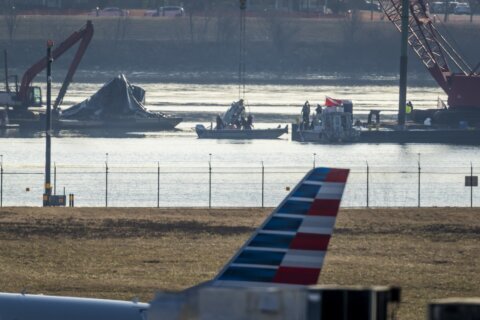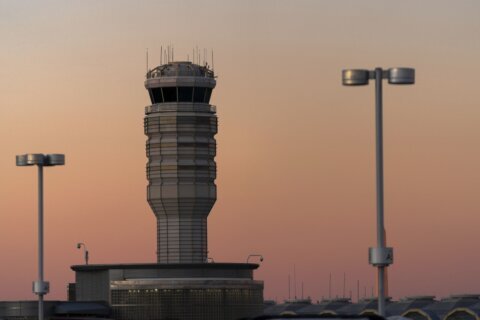Since the deadly midair collision near D.C. between an American Airlines regional jet and a military helicopter, scrutiny of the aviation industry has grown, with a shortage of air traffic controllers among the top concerns.
Nick Daniels, president of the National Air Traffic Controllers Association, said controllers nationwide are doing one of the most difficult jobs every day.
“They’re doing it with only 10,800 certified professional controllers,” Daniels said. “We’re 3,600 short of what’s needed.”
Daniels told the National Business Aviation Association on Thursday that many facilities require air traffic controllers to work demanding, six-day, 60-hour work weeks, which creates concerns over fatigue.
Solving the issue also brings added stress to current staff, because new recruits need to be trained. Plus, Daniels said, even if thousands showed up to solve the staffing crisis, it still takes roughly two to three years to properly certify them.
“If you hired 3,600 today, one, there’s not the capacity to properly throughput them all and train them. Right now, we deal with attrition every day as an aging workforce continues,” Daniels said.
And the training isn’t easy; applicants need to undergo medical and psychological exams, along with background checks. Then, they’ll need to go to a training academy, such as the Oklahoma City Academy, where candidates are evaluated to see if they have the right qualifications.
“If you don’t meet that standard at the Oklahoma City Academy, you’re removed from air traffic control, and then you would pursue careers out elsewhere,” Daniels said.
If they graduate, the candidate will then be assigned to a facility that presents even more studying and training in the area they would cover.
“If you were to move to a new city, you don’t suddenly know all the stores and where to walk to or where to drive around. We have to start doing the same thing of how the rules of air traffic control apply here, and what are the different dynamics of the airspace and the aircraft that traverse it?” Daniels said.
After all that, an air traffic controller would be ready to guide aircraft in and out of an airport.
The training, Daniels said, is rigorous, so the reality is many of those who start the process will not make it to the finish line — meaning 3,600 recruits would likely turn into only 1,800 new air traffic controllers.
He added that simulators have helped reduce training by 27%, but of the nation’s 313 FAA facilities, just 40 have them.
“Thanks to the FAA Reauthorization Act of 2024, it was passed that every tower should have a simulator. Now it has to be funded and start rolling that out across the country,” Daniels said.
Daniels said the situation shows a need for added investment in controller training and the importance of recruiting efforts. Retaining current controllers is crucial as well, he said.
“The focus has to be on keeping the ones that we have, protecting them, and then also the continued focus on bringing them in and reducing that training time, but to the high level in standards that the American people deserve,” Daniels said.
Get breaking news and daily headlines delivered to your email inbox by signing up here.
© 2025 WTOP. All Rights Reserved. This website is not intended for users located within the European Economic Area.








